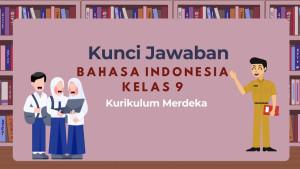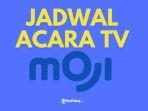Kunci Jawaban
31 Contoh Soal Ujian Bahasa Inggris SMA Kelas 12, Materi Narrative Text dan Argumentative Text
Contoh soal ujian SAS/PAS Bahasa Inggris kelas 12 semester 1 kurikulum merdeka beserta kunci jawaban
Answer: c. It improved
Baca juga: What Did You Know About Narrative Text? Kunci Jawaban Bahasa Inggris Kelas 12 Kurikulum Merdeka
Read the text below and answer question number 7-9
The Green House
Once upon a time, there was a family who lived in a traditional house that used a lot of energy. The family realized that they were contributing to environmental damage with their high energy consumption. They decided to build a green house, powered by renewable energy sources. The house was equipped with solar panels, energy-efficient appliances, and a rainwater harvesting system. Over time, the family saw their energy bills drop, and they felt good knowing they were living sustainably. Their green house became an inspiration for their neighbors to follow.
7. What did the family do to reduce their energy consumption?
a. Built a green house powered by renewable energy
b. Moved to a new house
c. Bought a car that runs on coal
d. Started using more energy-efficient appliances only
Answer: a. Built a green house powered by renewable energy
8. What was one of the features of the green house?
a. It used a lot of electricity
b. It had solar panels
c. It used non-renewable resources
d. It was made of plastic
Answer: b. It had solar panels
9. How did the neighbors react to the green house?
a. They ignored it
b. They moved away from the family
c. They complained about it
d. They were inspired to build their own green houses
Answer: d. They were inspired to build their own green houses
Read the text below and answer question number 10-12
The Electric Car Revolution
In a busy city, pollution from cars had become a major problem. One day, a group of engineers launched a new project: electric cars. These cars would run on clean energy, reducing emissions and helping to combat climate change. At first, people were unsure, but as more and more electric cars appeared on the streets, people began to realize the benefits. The city’s air quality improved, and the streets became quieter. People who drove electric cars felt good knowing they were helping the environment. The revolution of electric cars had begun.
10. What was the main problem caused by traditional cars in the city?
a. Noise pollution
b. Traffic accidents
c. Air pollution
d. Lack of parking space
Answer: c. Air pollution
11. What type of cars did the engineers introduce?
a. Diesel cars
b. Gasoline-powered cars
c. Electric cars
d. Hybrid cars
Answer: c. Electric cars
12. How did the people feel about driving electric cars?
a. They felt good knowing they were helping the environment
b. They felt guilty
c. They felt confused
d. They felt disappointed
Answer: a. They felt good knowing they were helping the environment
Text for question number 13-17
The Advantages of Using E-Money
In today's digital world, e-money has become an essential part of our daily lives. It allows people to make payments and transfer money instantly, without the need for physical cash. One major advantage is convenience—people can make transactions at any time and from anywhere, as long as they have internet access. E-money also reduces the risk of carrying cash, which can be lost or stolen. Additionally, many e-money platforms offer lower transaction fees compared to traditional banks. However, some argue that e-money can lead to security risks and fraud. Despite these concerns, e-money continues to grow in popularity due to its speed, convenience, and ease of use.
13. What is the main argument in favor of using e-money?
a. E-money increases transaction fees
b. E-money makes transactions more convenient and faster
c. E-money leads to security risks
d. E-money encourages people to carry more cash
Answer: b. E-money makes transactions more convenient and faster
14. What is one disadvantage of e-money mentioned in the text?
a. It makes people spend more money
b. It has no real-world application
c. It reduces the speed of transactions
d. It can lead to security risks and fraud
Answer: d. It can lead to security risks and fraud
15. Which of the following is a vocabulary word that refers to money stored electronically?
a. Transaction
b. Cash
c. E-money
d. Banknote
Answer: c. E-money
16. What is the purpose of the sentence "However, some argue that e-money can lead to security risks and fraud"?
a. To introduce a new idea supporting e-money
b. To provide evidence of the benefits of e-money
c. To present a counterargument
d. To explain the advantages of traditional banking
Answer: c. To present a counterargument
17. Which structure of argumentative text is most clearly represented in this passage?
a. A presentation of the benefits followed by a counterargument
b. A description of e-money
c. A list of disadvantages of e-money
d. A comparison between e-money and traditional money
Answer: a. A presentation of the benefits followed by a counterargument
Baca juga: How did the Writer Describe the Main Character, Kunci Jawaban Bahasa Inggris Kelas 12 Halaman 12
Text for question number 18-21
E-Money: A Risk to Privacy?
E-money has revolutionized the way we make payments, but it raises concerns about privacy and data security. Every time we make a transaction, personal data is collected and stored by the e-money provider. Some critics argue that this data can be misused, either by hackers or by the companies themselves. For example, sensitive information such as spending habits, location, and even personal preferences can be tracked. While e-money offers convenience, it also opens up the possibility of data breaches. Supporters of e-money argue that there are measures in place to protect privacy, but it’s clear that the risks should not be ignored.
18. What is the main concern raised about e-money in the text?
a. It is not widely accepted
b. It leads to fewer data breaches
c. It may compromise privacy and data security
d. It causes high transaction fees
Answer: c. It may compromise privacy and data security
19. Which word in the text refers to collecting and storing information about a person's activities?
a. Breach
b. Transaction
c. Privacy
d. Tracking
Answer: d. tracking
20. What does the sentence "Supporters of e-money argue that there are measures in place to protect privacy" suggest?
a. That e-money has no security measures
b. That e-money is dangerous and should be avoided
c. That there are arguments in favor of e-money’s security
d. That privacy is not important in e-money systems
Answer: c. That there are arguments in favor of e-money’s security
21. In terms of structure, what does this text use to present both sides of the issue?
a. A thesis statement and evidence
b. Arguments for and against e-money
c. A conclusion in favor of e-money
d. A personal experience with e-money
Answer: b. Arguments for and against e-money
Text for question number 22-26
The Future of E-Money
As technology continues to advance, e-money is expected to play an even bigger role in the future. Digital payments are expected to replace cash entirely in many countries, especially with the rise of mobile payment platforms. One of the key advantages is efficiency—e-money transactions are faster and more streamlined compared to traditional banking methods. Furthermore, it is more accessible to people without bank accounts, providing financial inclusion for many. However, there are challenges, such as the digital divide, where some people may not have access to the internet or smartphones. Despite these challenges, e-money is likely to become the dominant form of payment in the future.
22. What is the future role of e-money according to the text?
a. It will be replaced by cash
b. It will become the dominant form of payment
c. It will only be used in a few countries
d. It will become less efficient than traditional banking
Answer: b. It will become the dominant form of payment
23. What is one challenge mentioned in the text that could limit the use of e-money?
a. High transaction fees
b. People not having access to the internet or smartphones
c. The decline of mobile payment platforms
d. The high cost of building e-money systems
Answer: b. People not having access to the internet or smartphones
24. Which of the following vocabulary words refers to using mobile devices or the internet to make payments?
a. Digital payments
b. Financial inclusion
c. Bank account
d. Cash
Answer: a. Digital payments
25. What is the purpose of the sentence "Despite these challenges, e-money is likely to become the dominant form of payment in the future"?
a. To present a new challenge to the use of e-money
b. To conclude that e-money will not succeed in the future
c. To emphasize that e-money will overcome challenges
d. To explain the limitations of e-money
Answer: c. To emphasize that e-money will overcome challenges
26. What structure does the text follow in presenting the argument?
a. It discusses the future benefits and challenges of e-money
b. It focuses on one side of the argument
c. It gives a personal opinion on e-money
d. It compares e-money with traditional methods of payment
Answer: a. It discusses the future benefits and challenges of e-money
Baca juga: 50 Contoh Soal Ujian Sekolah Bahasa Inggris Kelas 12 Semester 2 Kurikulum Merdeka dan Kunci Jawaban
Text for question number 27-31
Is E-Money Safer Than Cash?
Many people argue that e-money is safer than carrying cash. One reason for this is that e-money transactions are encrypted, making it difficult for unauthorized users to access personal information. Cash, on the other hand, can be stolen easily. Additionally, e-money allows users to track their spending, which can help prevent fraud. However, some still feel more comfortable with cash, believing that e-money is vulnerable to hacking and fraud. In conclusion, while both e-money and cash have risks, e-money offers more security in the long run.
27. Why is e-money considered safer than cash?
a. E-money transactions are encrypted
b. E-money is more difficult to use
c. Cash is safer to carry
d. Cash cannot be tracked
Answer: a. E-money transactions are encrypted
28. Which vocabulary word refers to unauthorized access to information?
a. Encryption
b. Fraud
c. Hacking
d. Security
Answer: c. hacking
29. What is the main point of the text?
a. E-money is more vulnerable to hacking than cash
b. E-money is safer than carrying cash
c. Cash is safer than e-money
d. E-money does not allow for tracking spending
Answer: b. E-money is safer than carrying cash
30. What language feature does the phrase "In conclusion" indicate?
a. A transition to a new idea
b. A summary of the argument
c. A comparison between two ideas
d. A contradiction
Answer: b. A summary of the argument
31. What is the structure of the text?
a. It discusses both the advantages and disadvantages of e-money
b. It focuses only on the disadvantages of e-money
c. It provides personal opinions about e-money
d. It gives examples of e-money systems
Answer: a. It discusses both the advantages and disadvantages of e-money
(MG/Afifah Zahrah J)
Contoh Soal SAS
Kunci Jawaban
Bahasa Inggris
SMA
Kelas 12
Kurikulum Merdeka
narrative text
argumentative text
| Kunci Jawaban Bahasa Indonesia Kelas 8 Halaman 6: Mencatat Sumber, Tanggal dan Isi Pokok Berita |

|
|---|
| Kunci Jawaban Bahasa Indonesia Kelas 8 Halaman 45-46 Kegiatan 2.6: Pola-Pola Penyajian Iklan |

|
|---|
| Kunci Jawaban Bahasa Indonesia Kelas 11 Halaman 15-16: Identifikasi Teks Prosedur |

|
|---|
| Kunci Jawaban Bahasa Indonesia Kelas 11 Halaman 12: Pernyataan Umum dan Tahapan Melakukan Kegiatan |

|
|---|
| Kunci Jawaban Bahasa Indonesia Kelas 9 Halaman 94 Kurikulum Merdeka: Huruf Miring dalam Tulisan |

|
|---|
















Isi komentar sepenuhnya adalah tanggung jawab pengguna dan diatur dalam UU ITE.